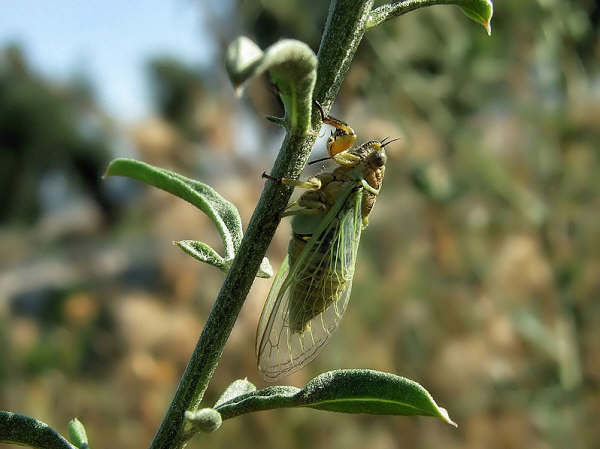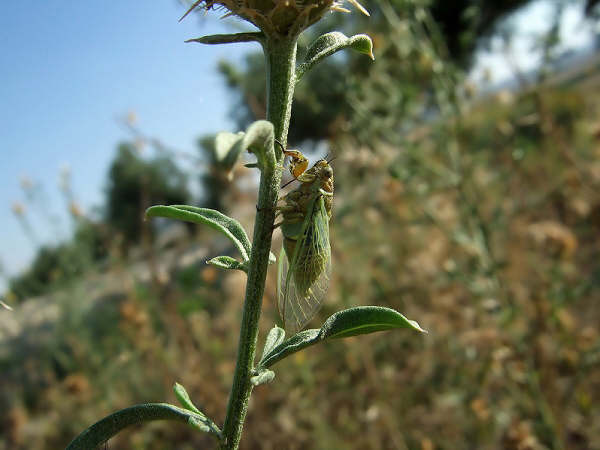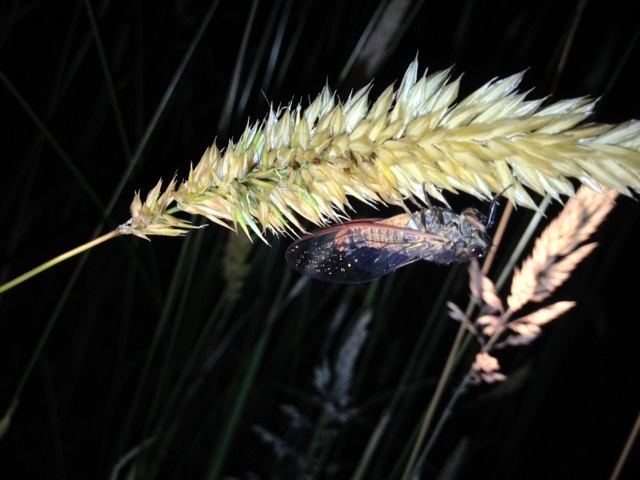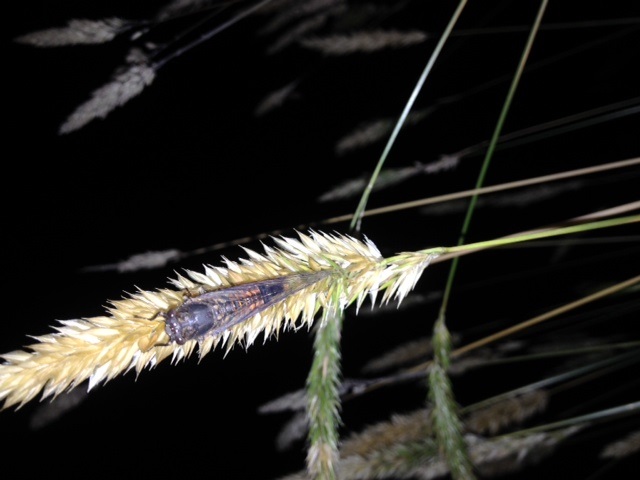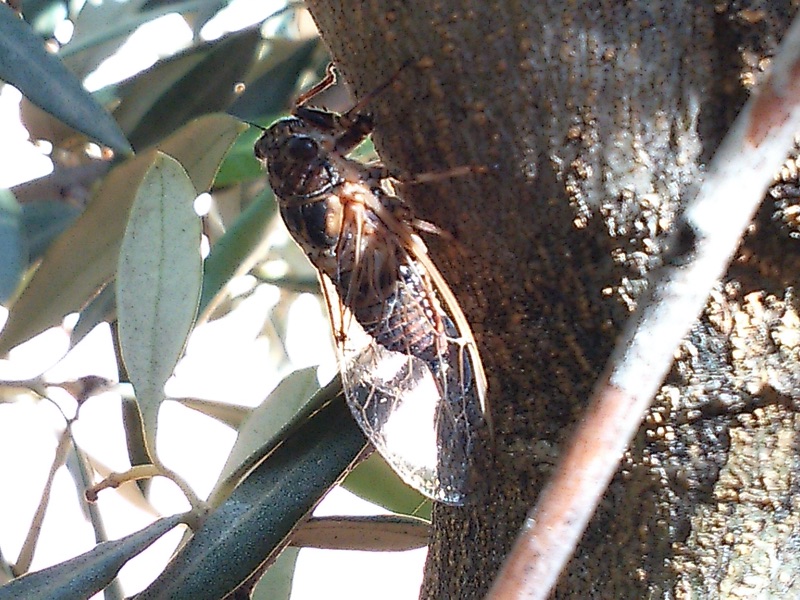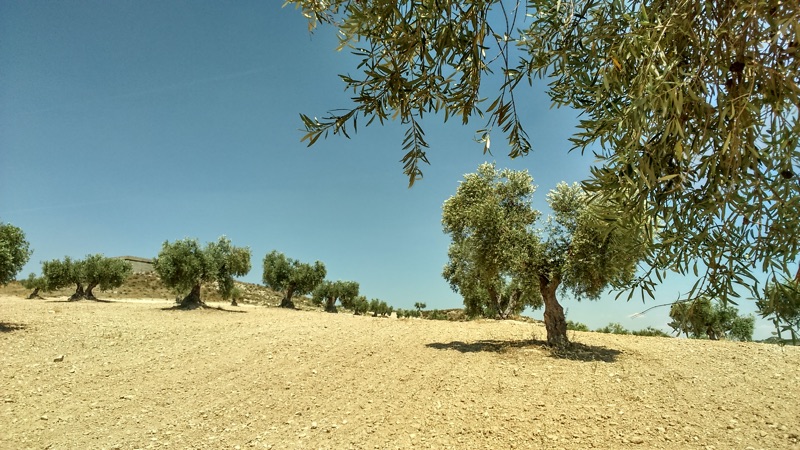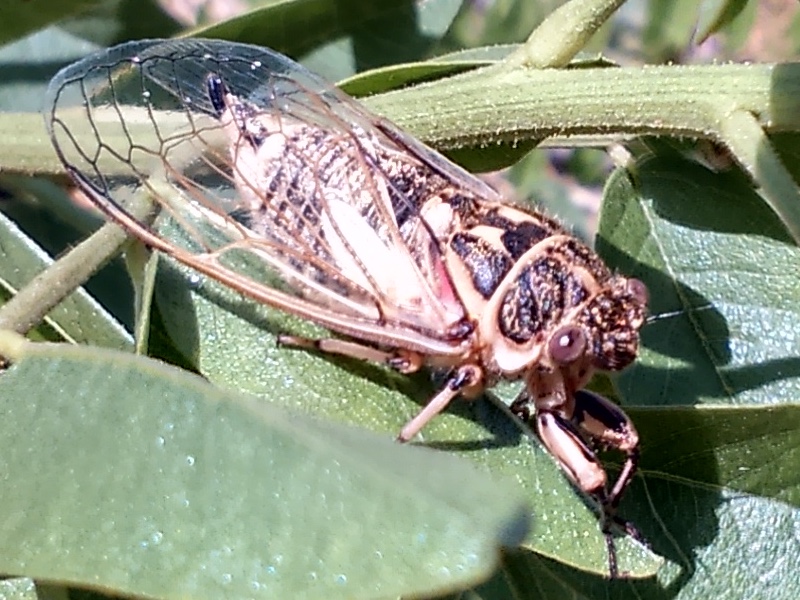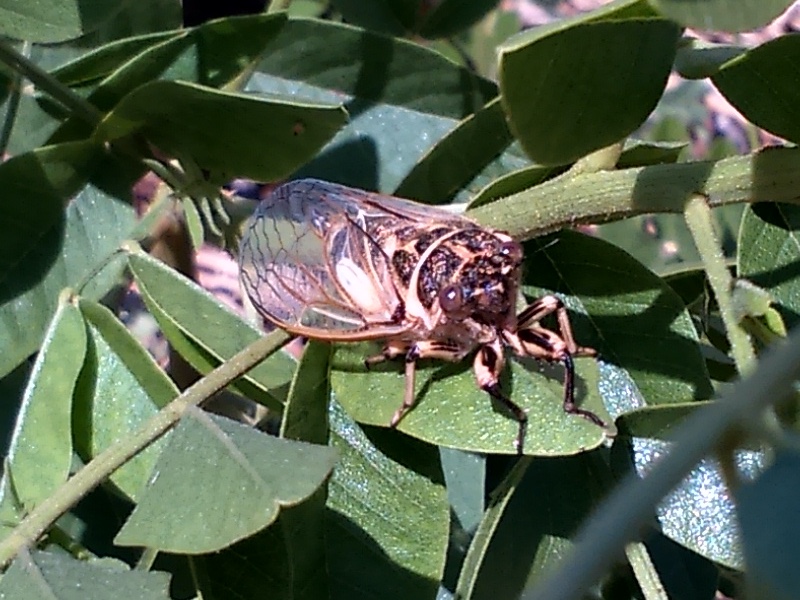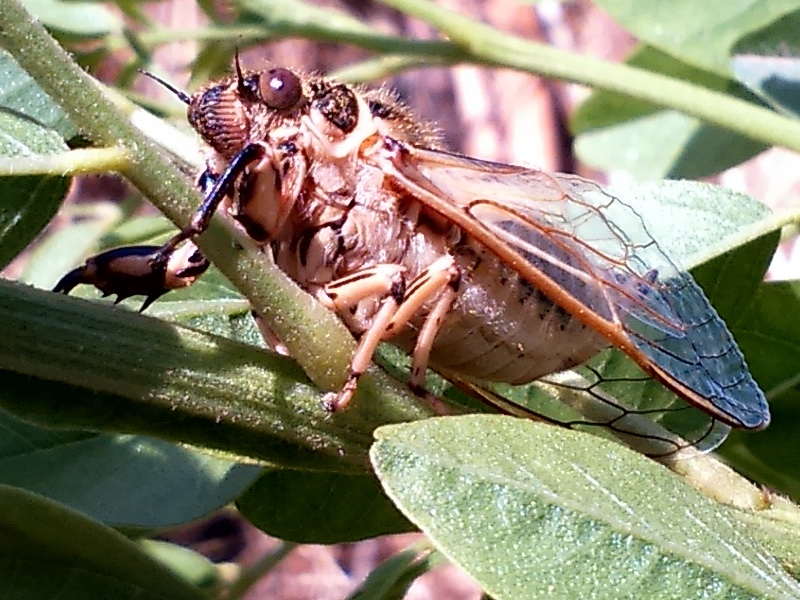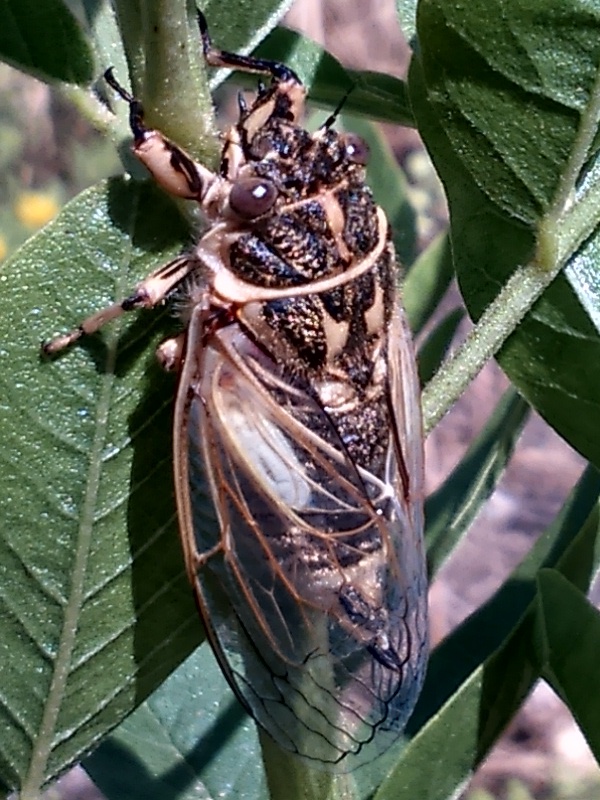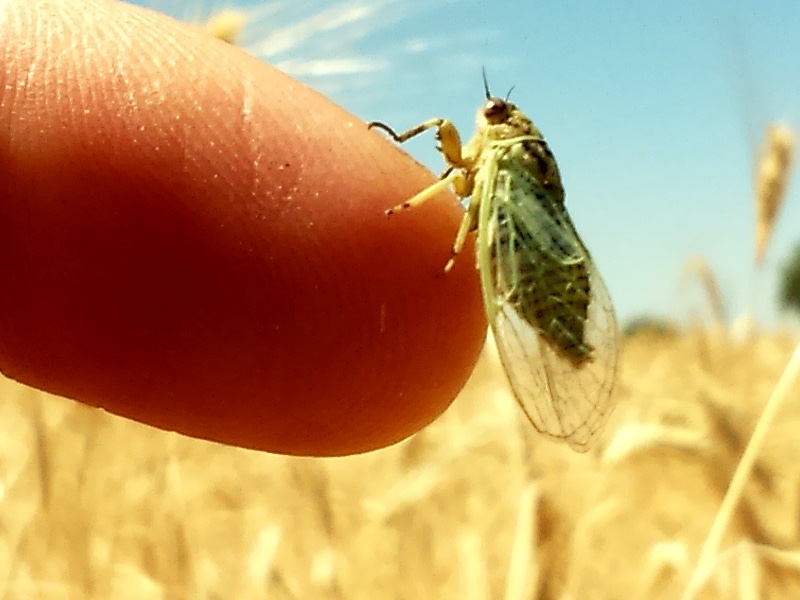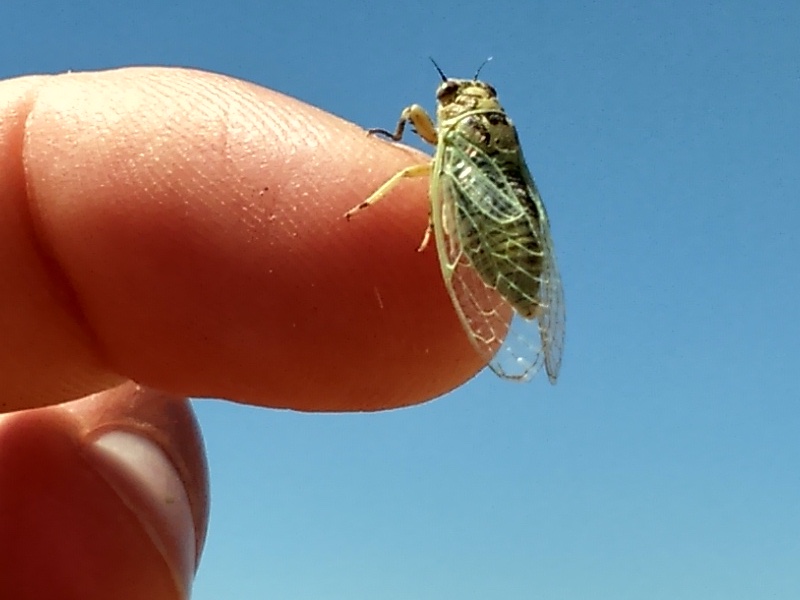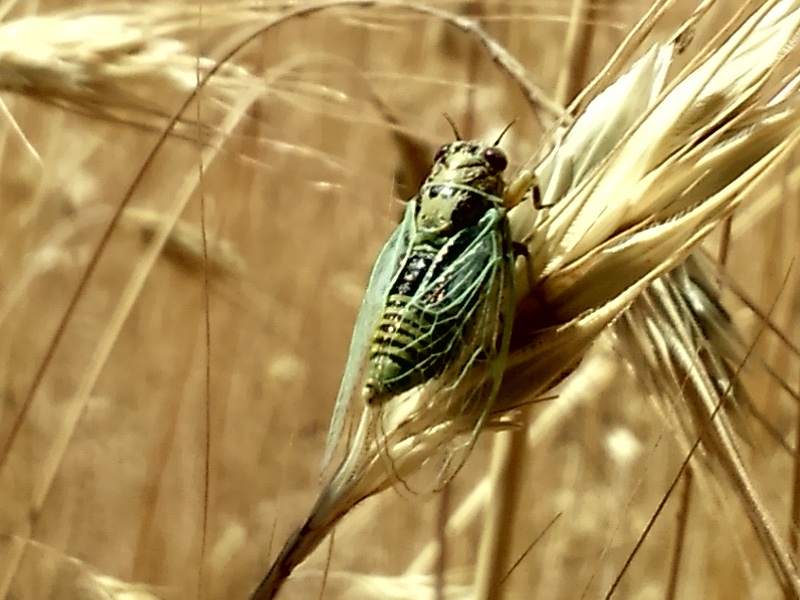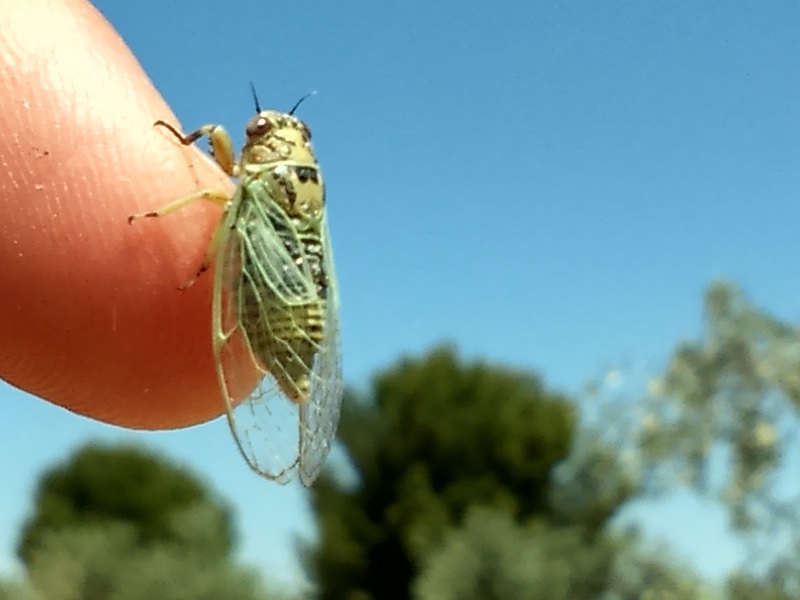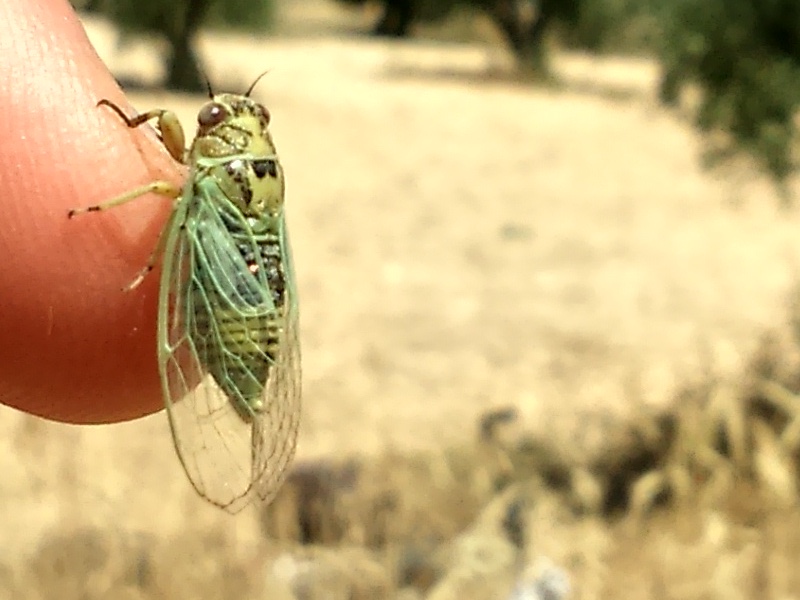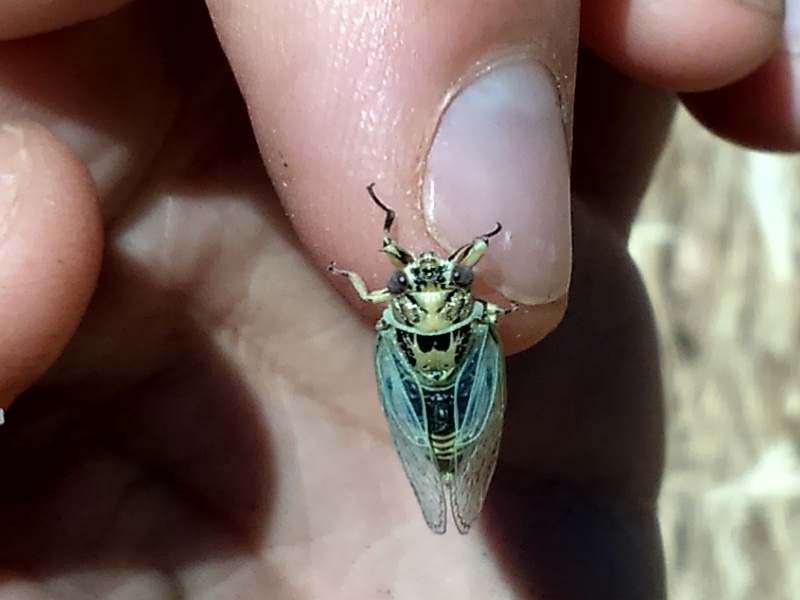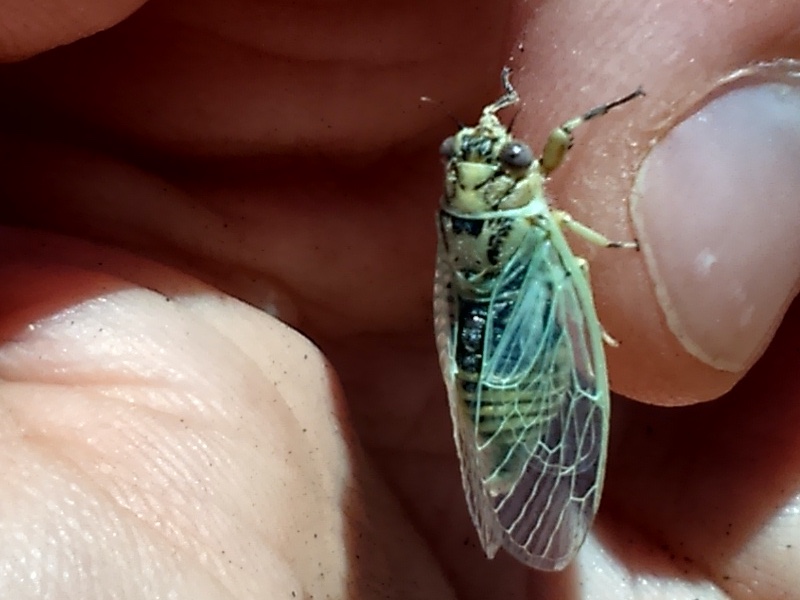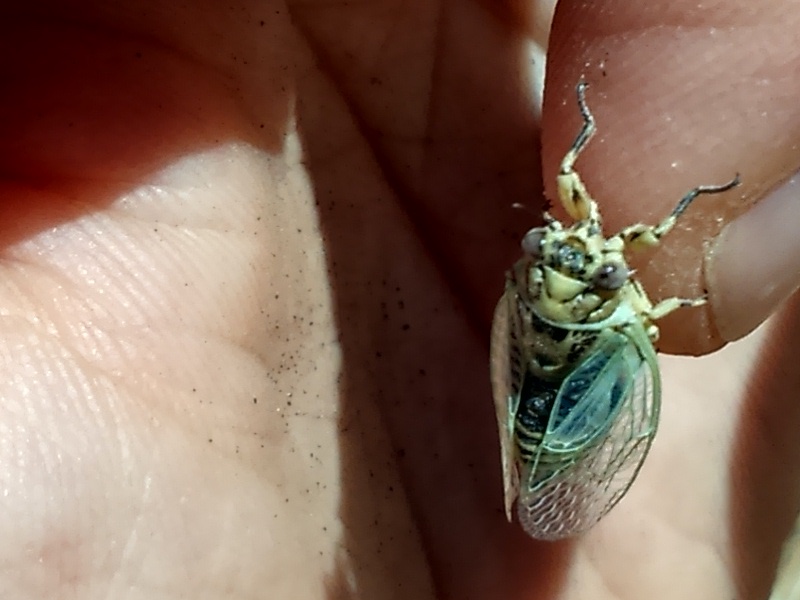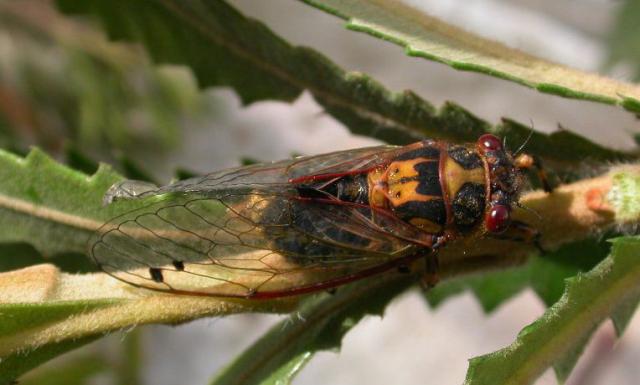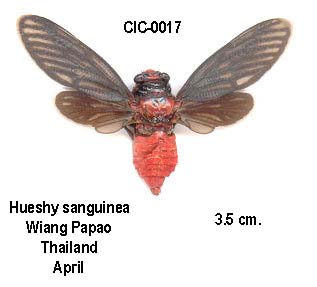Cicadettana calliope calliope (Walker, 1850) aka Southern Grass Cicada.
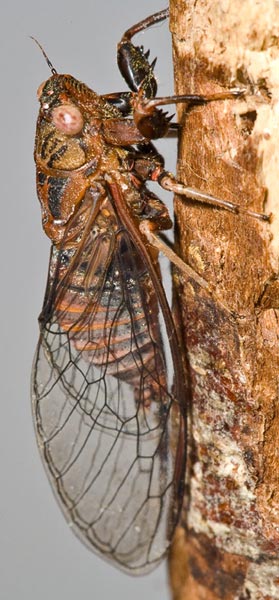
Pink Cicadettana calliope photo taken by Paul Krombholz.
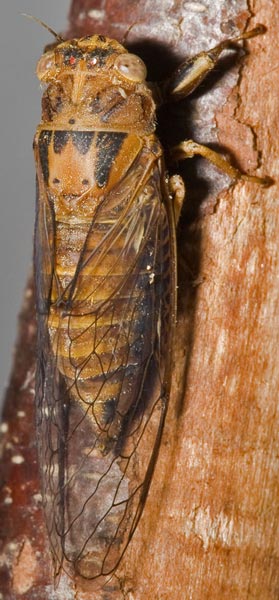
Yellow Cicadettana calliope photo taken by Paul Krombholz.
See All Cicadettana calliope calliope images and photos on cicadamania.com.
Song type: Call
Source: ©Insect Singers | Species: C. calliope calliope
Song type: Call
Source: ©Insect Singers | Species: C. calliope calliope
Name, Location and Description
- Cicada Name: Cicadettana calliope calliope (Walker, 1850)
- Short Name: C. calliope calliope
- Common Name: Southern Grass Cicada
- When: May-August, peaking in July.
- Where it is found: AL, AR, CO, FL, GA, IL, IN, IA, KS, KY, LA, MD, MS, MO, NE, NC, OH, OK, SC, SD, TN, TX, VA
- Maps: Biogeography of the Cicadas (Hemiptera: Cicadidae) of North America, North of Mexico [PDF]
- Description: Small. Comes in a variety of colors.
- Eye Color: pink, beige
- Pronotal Collar Color: rust, brown
- Identification: Bug Guide
- Identification: Bill Reynolds on iNaturalist
- Data: World Auchenorrhyncha Database
- Taxonomic Information: Integrated Taxonomic Information System
- Song: Insect Singers
A description by Wm.T. Davis1
The species has a wide distribution and shows considerable variation. The females are gen- erally a little larger than the males and with broader heads. There are both green and brown individuals.
Classification:
Family: Cicadidae
Subfamily: Cicadettinae
Tribe: Cicadettini
Subtribe: Cicadettina
Genus: Cicadetta
Species: Cicadetta calliope calliope (Walker, 1850)
List of sources
- (1) Davis, W.T. 1918. MISSISSIPPI CICADAS, WITH A KEY TO THE SPECIES OF THE SOUTHEASTERN UNITED STATES. Journal of The New York Entomological Society. 26: 141-155. Read it on archive.org.
- Full Binomial Names: ITIS.gov
- Common names: BugGuide.net; The Songs of Insects by Lang Elliott and Wil Herschberger; personal memory.
- Locations: Biogeography of the Cicadas (Hemiptera: Cicadidae) of North America, North of Mexico by Allen F. Sanborn and Polly K. Phillips.
- Descriptions, Colors: personal observations from specimens or photos from many sources. Descriptions are not perfect, but may be helpful.
Notes:
- Some descriptions are based on aged specimens which have lost some or a lot of their color.
